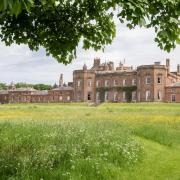From unassuming peat bogs on the tops of Mallerstang three rivers that contribute to arguably the most beautiful countryside in northern Britain start life.
The Swale, the Ure and the Eden rise within a kilometre of one another. Of these, the Eden is the longest. It owes its origins to springs known as Red Gill and Slate Gutter before becoming Hell Gill beck that falls 25 feet as Hell Gill Force before maturing into the Eden.
Having formed the boundary with North Yorkshire the river travels on for around 80 miles dominating the landscape through which it flows as Cumbria’s most prominent river.
Counter-intuitively forging a northerly path (‘uphill’, right?), the Eden cuts a swathe across the county from the south-east to the north-west entering the sea at the Solway Firth. It touches two national parks as it travels through limestone and sandstone landscapes and is joined by the Eamont, Irthing, Petteril and Caldew on its course.
![Pendragon Castle and the Eden valley, Mallerstang [visitcumbria.comScarlette DG]](https://www.greatbritishlife.co.uk/resources/images/18224164/?type=mds-article-575)
The Eden is beloved by many not least those who live close or near its banks, in Kirkby Stephen, Appleby, Langwathby, Lazonby and Kirkoswald, Armathwaite, Wetheral, Warwick Bridge and Carlisle.
It passes castles – Pendragon, Lammerside, Appleby, Carlisle, Drumburgh – caves and giants’ graves, cathedral and cenotaph, accompanies rail line, motorway and trunk road and flows beneath historic bridges.
One way to see the river in all its glory is to walk it in the opposite direction along the Eden Way, an 83-mile route from sea to source.
The fast-flowing Eden – the derivation of its name is said to be the Celtic word ituna, meaning water or rushing – is considered to be of European importance for its wildlife and habitats, from wetland to woodland, and takes in more than 30 Sites of Special Scientific Interest.

It supports wild Atlantic salmon, white-clawed crayfish, bullhead and common otter, and is an important fishery. The Eden is home to three species of lamprey – sea, brook and river – a prehistoric fish that has been around for millions of years. The snake-like creature was enjoyed by the Romans, Vikings and medieval Britons but might be considered pretty grotesque.
“Sea lamprey are parasites. They attach themselves to other animals and feed off their flesh and internal organs using mouths that are well designed for this purpose. Concentric rows of hooked teeth latch on to their victim while their piston-like tongue drills and scrapes through the skin of the prey until the lamprey can suck its blood or even its intestines,” describes Eden Rivers Trust.
The river is a Special Area of Conservation for marsh fritillary butterfly and supports whooper swan, wading birds and black grouse as well as red squirrel and otter.
The Eden is a mighty river that travels relatively unhindered through rural Cumbria. According to Eden Rivers Trust it is “overwhelmingly a farming landscape dominated by small, family-run farms with 97 per cent of the land farmed in some way. Only one per cent of the catchment is classified as urban”.

Perhaps unexpectedly, art is to be found along its course. Dick Capel was countryside manager for the East Cumbria Countryside Project from 1992 to 2008, during which time he commissioned the Goldsworthy Sheepfolds, a countywide sculpture project created by the internationally acclaimed artist Andy Goldsworthy.
The declaration of Visual Arts Year in 1996 provided Dick with the opportunity to put forward a proposal for public art on the banks of the river He found the funding and commissioned ten different artists to carve stone sculptures, The Eden Benchmarks, positioned along the river from its source to Rockliffe.
RECOMMENDED READING
- A journey along the River Derwent in Cumbria
- A journey along the River Esk in Cumbria
- A journey along the River Kent in Cumbria
Encouraged by its success, Dick’s next project was the Eden Poetry Path, around Kirkby Stephen and Nateby.
Twelve short poems, written by the nationally acclaimed poet Meg Peacocke, which address the hill farmer’s relationship with the landscape in and around the Upper Eden Valley, were carved by artist Pip Hall on blocks of stone installed at intervals either side of the river.

Few know the Eden better than Dick, who brought together the river and natural world around it, the people close to it, stories, history, myth and legend, in his book The Stream Invites us to Follow.
He writes: “Following my retirement in 2008 I embarked on a journey over several years, mainly on foot, keeping company with the River Eden and some of its tributaries from source to sea. As I did so I kept a journal consisting of copious scribbled notes describing the routes I followed and my observations and thoughts along the way. Slowly the scribbled notes turned into a book.”
It was shortlisted for The Striding Edge Prize for Landscapes and Traditions in the Lakeland Book of the Year 2021.
The mighty Eden is much admired, but it also brings challenge. Wide flood plains together with run off from the fells and some of the highest rainfall in England mean that its levels rise quickly after heavy rain, leaving little time to warn communities downstream.

Eden Rivers Trust warns: “The flood plain of the River Eden floods regularly and extensively, and localised flash flooding is frequent in settlements along the river such as Appleby-in-Westmorland. The convergence of floodwaters at Carlisle (where the Petteril and the Caldew flow into the Eden) means that the city is at risk from major flood events.”
The trust was formed in 1996 and its aims include improving water quality, managing water to provide flood protection, safeguarding natural habitats, storing and absorbing carbon and supporting people’s recreational connection to the catchment.
Woodlands cover only ten per cent of Eden so planting the ‘right’ trees in the right places is a major focus. Projects include installing buffer strips and hedgerows across farmland to support flood prevention, rewiggling rivers and developing wetlands along with riverbank restoration to prevent further erosion and support biodiversity.
Flooding is not the only risk, however; the Eden also faces challenges in water quality.

“In rural areas such as the Eden, one of the major pressures on the river today comes from communities who do not have access to mains sewerage, many of which have inferior or poorly maintained septic tanks or treatment works,” explains the trust.
“There may only be 150,000 people living in the catchment, but several million visitors each year put more pressure on our rural sewage systems, particularly in tourist hot spots, and can lead to water quality issues.”
This spring the trust received a grant of £2 million from The National Lottery Heritage Fund for its heritage partnership project, Access to Eden: breaking barriers, building bridges. Added to money raised by the project’s partners, it will see a total of £2.6 million spent on people and the environment in the Eden district over the next four years.
The project aims to remove barriers that prevent people and wildlife from accessing the natural heritage of east Cumbria and ‘build the bridges’ needed so they enjoy and thrive in, on and beside Eden’s rivers.

It will include improvements to walks and trails, coupled with better information and opportunities for all ages and abilities to get closer to nature.
A major part of the project involves community-led practical conservation projects at eight ‘doorstep’ sites within easy reach of urban areas along the length of the Eden.
Elizabeth Radford, chief executive of Eden Rivers Trust, says: “All the partners in this project love the Eden Valley and the special natural places found here, from the river’s source in Mallerstang to the sea beyond Carlisle.
“This grant from The National Lottery Heritage Fund will allow more people to experience the magic of those places, many of whom currently find themselves excluded. Through sharing these places, we hope more people from different communities will be encouraged to join in with caring for the Eden, our countryside and our wonderful river.”
Things to do along the River Eden in Cumbria
PHOTO OP – Water Cut stone sculpture at Mallerstang by Mary Bourne, the first in the Eden Benchmarks series; the Nine Standards cairns near the summit of Hartley Fell, high above Kirkby Stephen; the ancient stone circle of Long Meg and her Daughters, near Little Salkeld.
PIT STOP – Appleby Hub and Jak & Co, in Appleby; Saddleback’s takeaway, Langwathby; Duke’s Head, Armathwaite; The Queen Inn, Great Corby; Fini’s restaurant, Scotby; The Old Bank, Alexandros, Penny Blue, La Mezzaluna, Cathedral Café, John Watt coffee shop, Cakes and Ale, all Carlisle.
TOP SHOP – The Cupboard Under the Stairs, Appleby, for fans of Harry Potter; Appleby Hub for upcycled furniture and local art and crafts; Courtyard Gallery, Appleby; N&J Dowding butchers and Low Howgill Butchers and Deli, both Appleby; Kirkoswald community shop; Bookends, Warwick Bazaar, House of Malt, Ashbridge & Brown, all Carlisle.
HOT SPOT – Rutter Force and mill, near Appleby; Warwick Bridge Corn Mill; Carlisle Cathedral and Castle; Tullie House (due to reopen this summer), Carlisle; Sands Centre and West Walls Theatre, Carlisle; Burgh Marsh.
FAMILY STOP – Pendragon Castle; Kirkby Stephen East historic station and steam railway; Kirkby Stephen station – catch up with the Eden in Carlisle by taking the scenic Settle-Carlisle line; Acorn Bank National Trust gardens, woodland and restored mill.
Eden Rivers Trust runs community discovery days and community activities – edenriverstrust.org.uk/things-to-do/.
AND FLOP – Appleby Castle; Armathwaite Manor; Willowbeck Lodge, Scotby; The Halston, Carlisle.





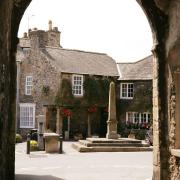

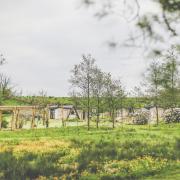


![Hampsfell [visitcumbria.com]](/resources/images/128x89/1x/18466935.jpg)
![Hampsfell [visitcumbria.com]](/resources/images/180x180/1x/18466935.jpg)

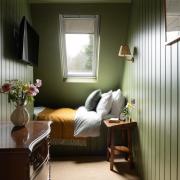



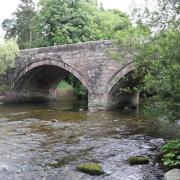






![Kirkby Lonsdale is a popular area for cycling as well as walking [Cumbria Tourism/Carlos Reina]](/resources/images/128x89/1x/18096705.jpg)
![Kirkby Lonsdale is a popular area for cycling as well as walking [Cumbria Tourism/Carlos Reina]](/resources/images/180x180/1x/18096705.jpg)

